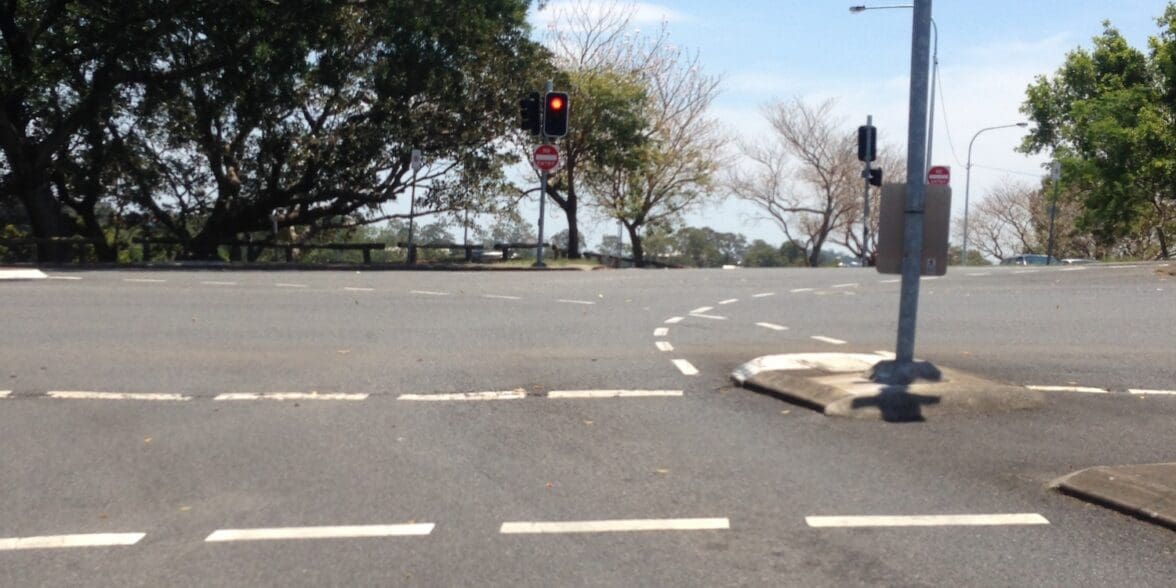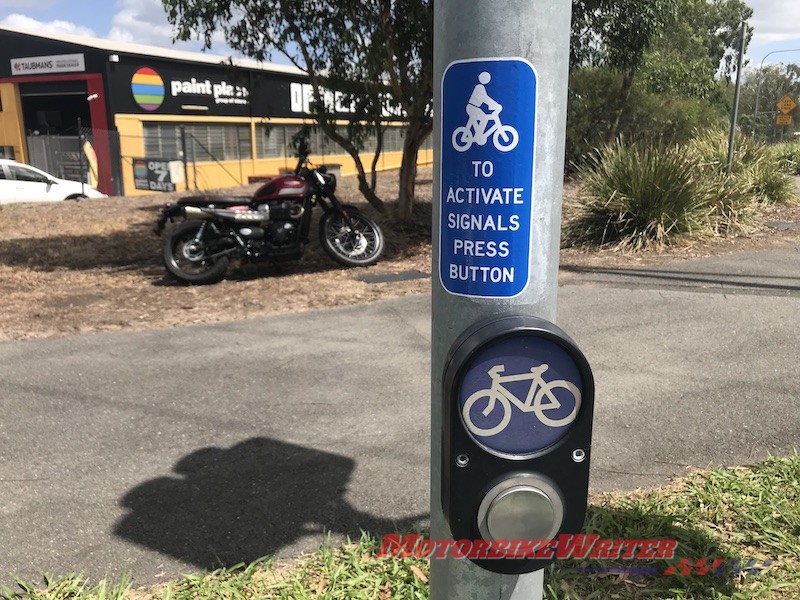Have you ever sat at traffic lights waiting for them to turn green, but they don’t?
That’s because some sets of traffic lights are “vehicle actuated” which means there is some sort of sensor that detects the vehicle and trips the change sequence.
However, many motorcycles are not detected because they are either too small or not in the correct position on the road.
Sensors are often used at the intersections of busy and not-so-busy roads so that the main flow of traffic isn’t interrupted. Others only work at night and are on normal timed patterns during the day.
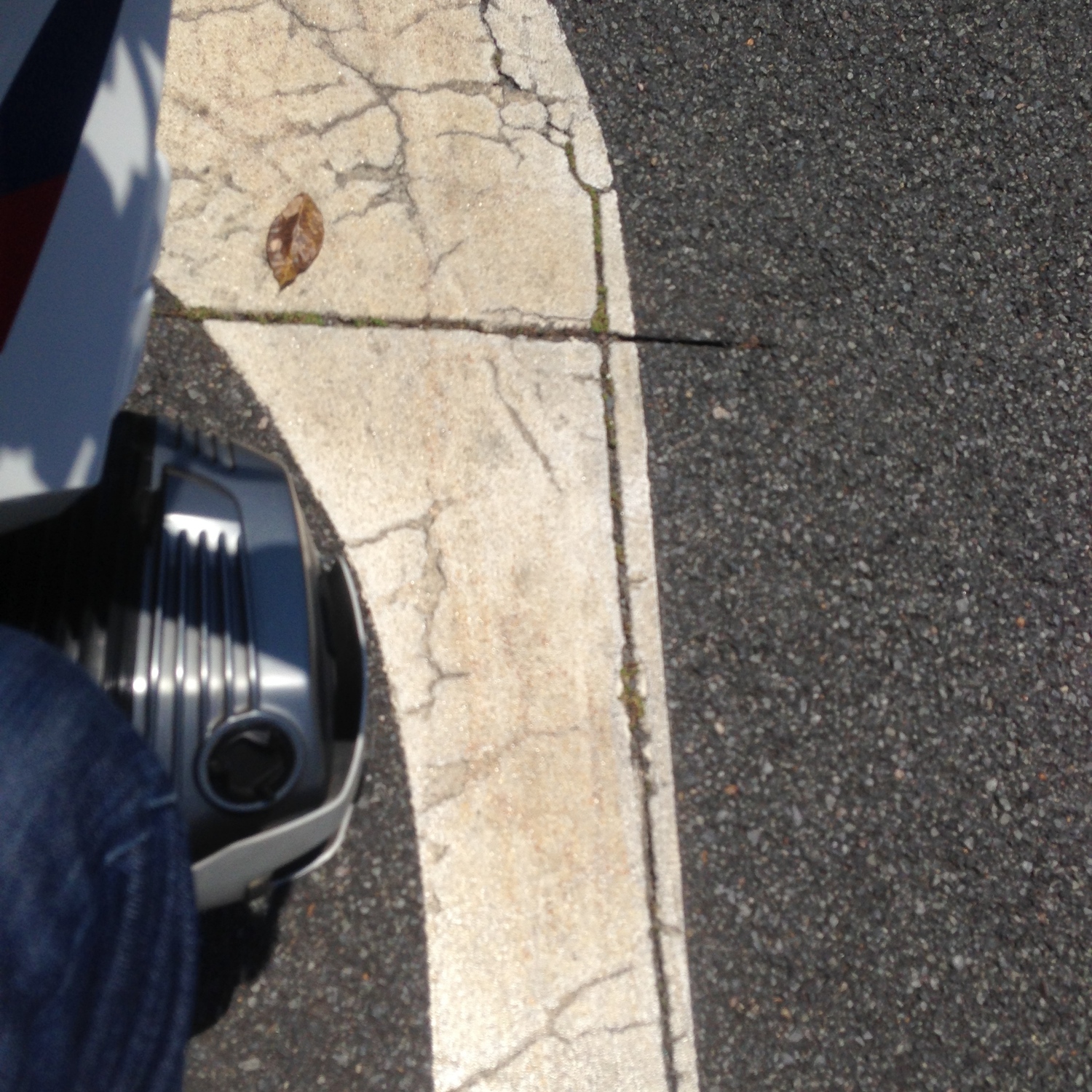
There are varying types of sensors used around the world but the most common one is called an inductor loop. It consists of wire placed in the asphalt leaving a telltale rectangular cutting in the road surface. The wire loop detects the metal in the engine block of your vehicle.
Most riders approach intersections in the wheel tracks as they don’t want to sit in the slippery oil that has dripped form the engines of other vehicles. Unfortunately, most inductor loops are not made wide enough to detect motorcycles sitting in this position.
The most effective place to stop your bike is right on top of the centre cut line as in the photo below.
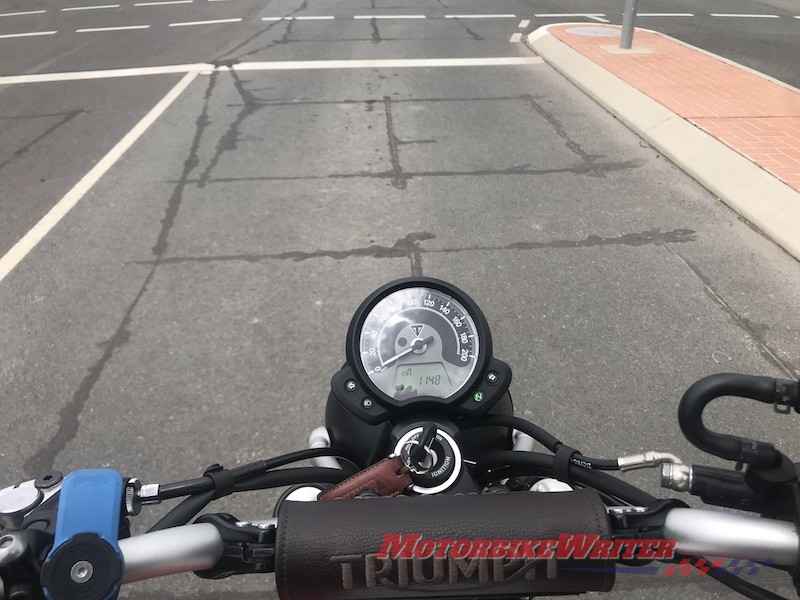
However, be careful of slippery oil and white arrow markings that are usually right in the middle of the lane.
Can you get off at traffic lights?
There is nothing you can legally do if your bike is simply too small to trip the sensor.
Some people, put the side stand down, get off and hit the pedestrian button but it is illegal to leave your vehicle parked at the lights.
Some traffic lights accommodate this situation by providing an accessible button for bicycle, motorcycle and scooter riders. But it can be difficult to reach while sitting on your motorbike.
Best advice
Best advice is to ride in the middle over the centre cut on the loop and move as far forward as possible to allow a car to come in close behind you and activate the lights. On some occasions, I’ve even waved forward a driver behind me.
Twelve American states have acknowledged this problem with “safe on red” laws that allow motorcycles to proceed through a red light so long as they have stopped first. Some states require riders to come to a full stop, while others make them wait for a full rotation of light changes and some require riders to wait up to two minutes.
They have not only identified that this is a matter of inconvenience, but also a matter of safety as these vehicles are in a vulnerable position and riders can also suffer heat exhaustion sitting still for a long time on very hot days.
It is something that should be considered for Australia with its extremes of weather.
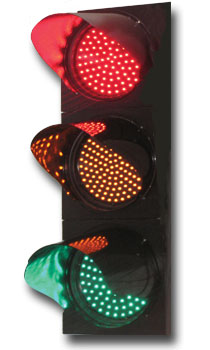
- Arkansas – (2005) allows a motorcyclist to proceed with caution, after coming to a full and complete stop, through a red light that fails to detect the bike. (Arkansas Code section 27-52-206)
- Idaho – (2006) If a signal fails to operate after one cycle of the traffic light that a motorcyclist may proceed, using due caution and care, after coming to a full and complete stop at the intersection. (Statute 49-802)
- Illinois – (2012) Permits a driver of a motorcycles or bicycle facing a red light that fails to change within a reasonable period of time of not less than 120 seconds to proceed after yielding the right-of-way to any oncoming traffic. However, this law doesn’t apply to municipalities of over 2,000,000 people – such as Chicago. (625 ILCS 5/11-306)
- Minnesota – (2002) A person operating a bicycle or motorcycle who runs a red light has an affirmative defense if the driver first came to a complete stop, the traffic light stayed red for an unreasonable amount of time and appeared not to detect the vehicle and no motor vehicles or people were approaching the street. (Statute 169.06)
- Missouri – (2009) State law tells both motorcyclists and bicyclists that run red lights that they have an affirmative defense if they brought their vehicle to a complete stop, the light was red for an unreasonable time period, and there were no motor vehicle or person approaching. (Statute 304.285)
- Nevada – (2013) Those using motorcycles, bicycles, mopeds, and tri-mobiles are allowed to proceed through an intersection with a red light after waiting for two traffic light cycles, and they yield to other vehicle traffic or pedestrians. (Statute 484B.307)
- North Carolina – (2007) Motorcyclists are permitted to move cautiously through a steady red light after coming to a complete stop and waiting a minimum of three minutes and if no other vehicle or pedestrians are approaching the intersection. (NCGS 20-158)
- Oklahoma – (2010) Motorcycles can proceed cautiously through a steady red light intersection after a making a complete stop and if no other motor vehicle or person is approaching the roadway. (Statute 47-11-202)
- South Carolina – (2008) After making a complete stop and waiting for a minimum of 120 seconds, the driver of a motorcycle, moped, or bicycle may treat a steady red light that doesn’t change as a stop sign and proceed with caution. (S.C. Code 56-5-970)
- Tennessee – (2003) After coming to a complete stop, motorcyclists and bicyclists may proceed through a steady red light when it is safe to do so. (Tennessee Traffic Control Signals 55-8-110)
- Virginia – (2011) Drivers of motorcycles, mopeds, and bicycles may move with caution through non-responsive red lights as long as they yield the right-of-way to others approaching the intersection, and have come to a complete stop for two complete light cycles or 120 seconds, whichever is shorter.(Statute 46-2-833)
- Wisconsin – (2006) A motorcycle, moped or bicycle is permitted to run a steady red light after making a complete stop and waiting at least 45 seconds and then yields the right–of-way to any vehicular traffic or pedestrians using the intersection. (Statute 346.37)


